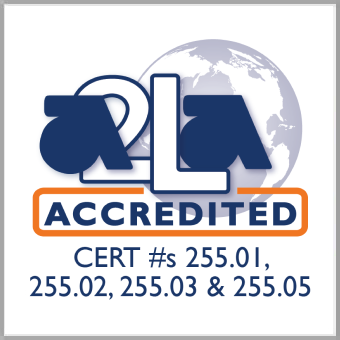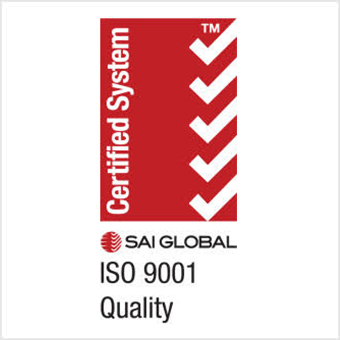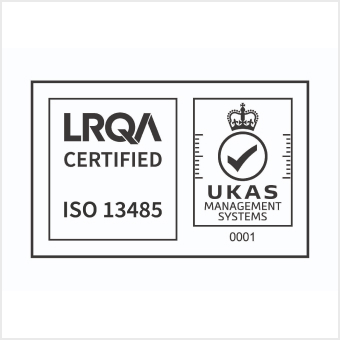ARDL’s multiple Xenon Arc Weather-Ometers® are the preferred light source for testing materials that will be exposed to natural sunlight. They use a precision gas discharge lamp sealed in a quartz tube with a water lamp cooling system. Precise humidity, chamber temperature and black panel temperature controls allow the Xenon long arc, when properly filtered, to simulate UV and visible solar radiation more accurately than any other artificial light source.
Typical applications include automotive components, chemicals, paints and coatings, paper, pharmaceuticals, textiles, plastics and polymers. ARDL can perform Xenon Arc tests according to AATCC, ASTM, automotive OEM, SAE, ISO, Mil-STD and UL pre-testing specifications.
Available Methods
Xenon-Arc Exposure of Plastics Intended for Indoor Applications
1. Introduction
The "Xenon-Arc Exposure of Plastics Intended for Indoor Applications" test method, as defined by standards such as ASTM G155, is used to simulate the effects of natural sunlight on plastic materials. The test method uses a xenon arc lamp as a light source to replicate the full spectrum of solar radiation, including ultraviolet (UV) light, visible light, and infrared radiation, which can degrade plastics over time. This accelerated weathering test is primarily used to evaluate the durability, color stability, and physical properties of plastics that are intended for indoor use but may still be exposed to sunlight or artificial light sources that simulate sunlight.
2. Purpose and Scope
This test method evaluates the long-term effects of sunlight exposure on plastics by simulating the effects of UV radiation, temperature variations, and humidity. The key outcomes of this test include assessing:
- Discoloration or fading of plastic materials.
- Physical property degradation (such as tensile strength, impact resistance, and flexibility).
- Surface degradation such as cracking, blistering, or chalking.
Although it is designed for indoor-use plastics, the test can also provide insights for applications where plastics might be exposed to sunlight in controlled environments (e.g., in conservatories, window displays, or skylights).
3. Testing Equipment
The core piece of equipment used in this method is the Xenon-Arc Light Apparatus, which consists of:
- Xenon-arc lamps: These lamps are used to simulate the UV spectrum and other environmental conditions, such as heat, that plastic materials would experience under natural sunlight. Xenon-arc lamps provide a higher intensity of light and can be adjusted for different exposure durations and cycles.
- Exposure chamber: This chamber controls the environment of the samples, including temperature, humidity, and the light intensity to which the samples are exposed.
- Specimen holders: The plastic samples are mounted in holders within the chamber, ensuring uniform exposure to the xenon-arc light source.
4. Test Procedure
The test procedure typically involves several key steps:
- Sample Preparation: Plastic samples are cut into specified shapes and sizes according to the standard's requirements (e.g., ASTM G155 or ISO 4892). Samples should be clean and free of any contaminants that might affect the results.
- Pre-conditioning: Some plastics may require conditioning prior to testing, especially if they have been stored under specific conditions or require acclimatization to the testing environment.
- Exposure Setup: Samples are positioned in the xenon-arc chamber. The setup includes adjusting the light intensity to replicate the desired solar radiation level, as well as controlling the chamber’s temperature and humidity. Typical exposure parameters involve cycles of light and dark periods, with varying temperatures and humidity conditions to mimic real-world environmental variations.
- Test Duration: The exposure duration can vary depending on the specific application. Typical test durations may range from several hundred to several thousand hours. However, the duration is accelerated compared to real-world time, providing rapid insight into how materials will perform over extended periods of use.
- Data Collection and Monitoring: During the test, the physical condition of the samples is regularly assessed. This includes visual inspections for discoloration, cracking, or other surface changes. Instrumental measurements may also be made to quantify changes in properties such as tensile strength, elongation, and impact resistance.
5. Test Parameters
Several key factors are controlled and varied during testing:
- Light Intensity: The intensity of the xenon light is adjusted to match the desired exposure conditions. Typically, this intensity is adjusted to simulate different climates or geographic locations.
- Temperature: Temperature is controlled within the chamber to simulate the heating effects of sunlight on the plastic.
- Humidity: Humidity is often cycled between wet and dry conditions to simulate natural weather cycles, as moisture can also affect the degradation of plastics.
6. Evaluation Criteria
After the exposure period, plastics are evaluated for several signs of degradation:
- Color Change: Discoloration is often the most noticeable effect of UV exposure, with plastics turning yellow or fading. This can be quantitatively measured using colorimetric analysis, comparing the color change before and after exposure.
- Surface Degradation: Plastics may show signs of surface cracking, chalking, or blistering due to UV and heat exposure. These changes are evaluated visually and may be classified based on severity.
- Physical Property Testing: The mechanical properties of the plastic are assessed, typically through tensile testing, impact resistance testing, and hardness measurements, to quantify any loss in performance.
7. Applications of the Test
The test method is widely used in industries such as:
- Consumer Goods: Plastics used in indoor products like furniture, appliances, and home accessories are often tested for color stability and durability.
- Automotive: Plastics used in car interiors, particularly dashboard components and trim pieces, are tested for UV degradation and discoloration.
- Construction: Plastic materials used in indoor applications such as window frames or decorative moldings are tested for durability and aesthetic performance under simulated sunlight exposure.
8. Limitations
- Artificial Conditions: Although the xenon arc test simulates UV exposure, it does not perfectly replicate the full range of environmental conditions, such as pollution or biological effects like mold growth.
- Exposure Duration: While accelerated testing provides quicker results, the exposure duration may still not fully account for long-term, real-world usage patterns.
- Indoor Use Limitations: This method is intended for plastics designed for indoor environments but can be extrapolated to some degree for materials used outdoors in sheltered locations.
9. Standards and References
The test method aligns with several international standards, including:
- ASTM G155: Standard Guide for Xenon-Arc Exposure of Plastics Intended for Indoor Applications.
- ISO 4892-2: Plastics – Methods of Accelerated Outdoor Exposure – Part 2: Xenon-Arc Exposure Apparatus.
- ASTM D2565: Standard Test Method for Xenon-Arc Exposure of Plastics.
These standards provide guidelines for setup, sample preparation, exposure conditions, and data analysis.
10. Conclusion
The Xenon-Arc Exposure of Plastics Intended for Indoor Applications test method is an essential tool for manufacturers and researchers to evaluate the durability and performance of plastic materials under simulated sunlight exposure. By replicating the damaging effects of UV radiation, temperature, and humidity, the test helps ensure that indoor-use plastics will maintain their appearance and structural integrity over time. It provides valuable data that can guide material selection, product design, and quality control for plastics used in a variety of industries.




